These Are the 8 Best Fruit and Veggie Skins to Eat
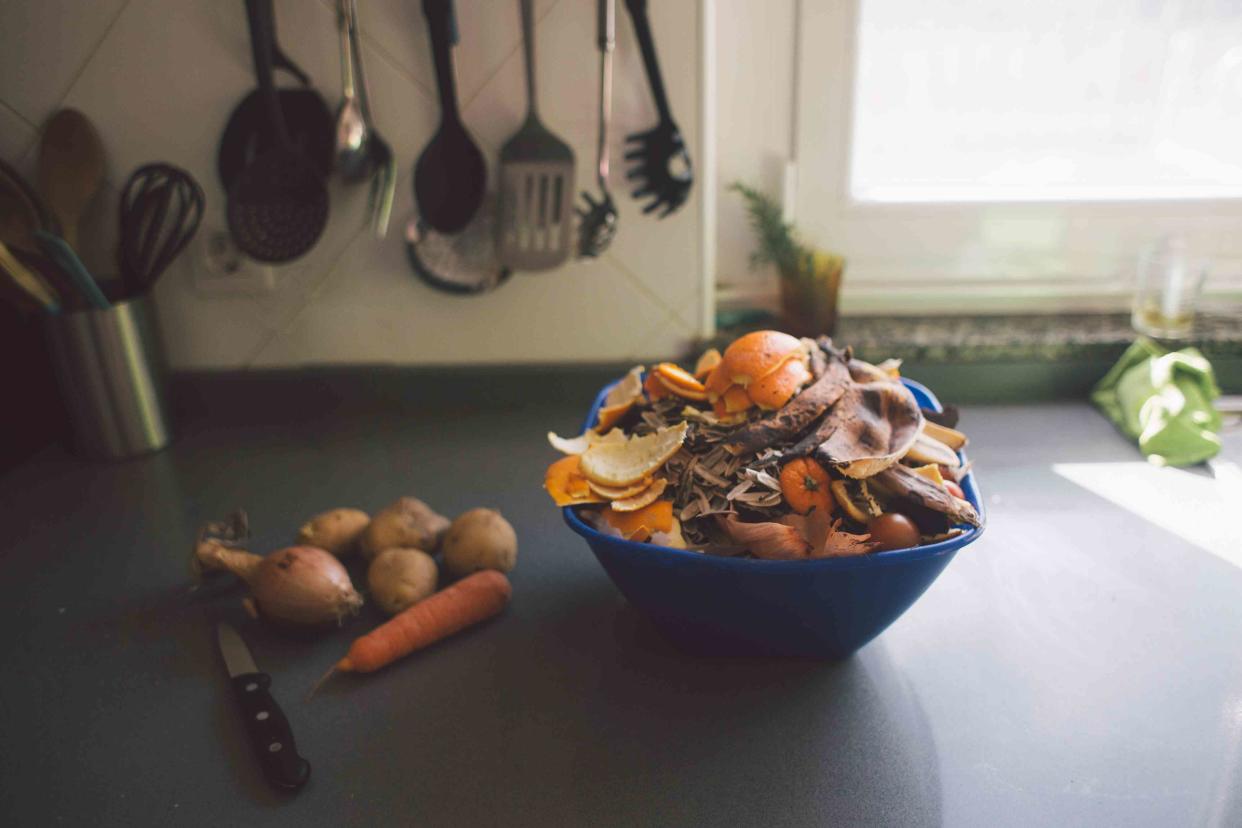
Os Tartarouchos / Getty Images
Fact checked by Nick Blackmer
Key Takeaways
Many skins, peels, and rinds of fresh fruits and vegetables are edible and very nutritious.
Instead of throwing out a kiwi peel or watermelon rind, try eating them to fuel your body with vitamins, minerals, and fiber.
Saving the outer parts of your produce can also help limit food waste.
You might be quick to peel away the skins of your favorite fruits and vegetables to get to that delicious, juicy flesh inside. But that cast-aside outer layer is a treasure trove of nutrients, vitamins, and fiber and adds some delightful texture and depth of flavor to meals.
Many fruits’ and vegetables’ skins, peels, and rinds “are rich in fiber and additional nutrients like potassium and magnesium, enhancing the nutritional value of your diet,” Michelle Routhenstein, RD, a preventive cardiology dietitian, told Verywell.
In fact, Theresa Gentile, RDN, National Spokesperson for the Academy of Nutrition and Dietetics, told Verywell that “produce skins are an underutilized and wasted functional nutrition source. They contain a variety of healthful compounds that people usually throw away.”
We asked dietitians about their favorite produce skins to eat, along with what sort of health benefits they offer. Here are the fruit and veggie peels that can help you get some extra nutrition and create less food waste.
Not All Fruit and Veggie Peels Safe to Eat
Not all produce skins are safe to eat. While you may not think twice about enjoying an unpeeled apple or potato skin, there are a few fruit and veggie outer layers you don’t want to eat.
For example, mango skin contains urushiol, the same compound found in poison ivy, which can trigger allergic reactions in people who are susceptible. The skin of some exotic fruits, such as lychee, contains toxins that can be harmful if ingested.
Related: The Health Benefits of Seasonal Eating, According to Dietitians
Kiwi
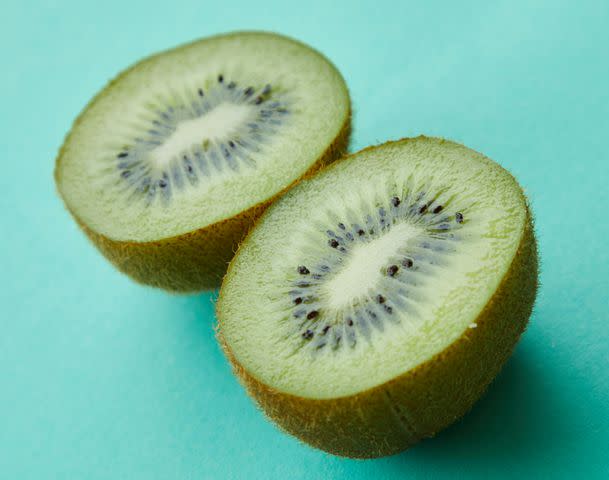
Pexels/Laker
“I love eating the whole kiwi fruit, including the fuzzy skin, as it doubles the amount of fiber and provides extra doses of essential nutrients like vitamin E, C, and polyphenols,” said Routhenstein.
There’s some research to back up claims about the health benefits of kiwi skin. A 2020 study looked at the effects of eating three SunGold kiwifruits—the variety with smooth skin and gold-colored flesh—both with and without the skins. Eating the skin of the kiwi appeared to result in lower inflammation and beneficial effects on gastrointestinal health.
Related: Eating 2 Kiwis a Day Keeps Vitamin C Supplements Away
Tomato
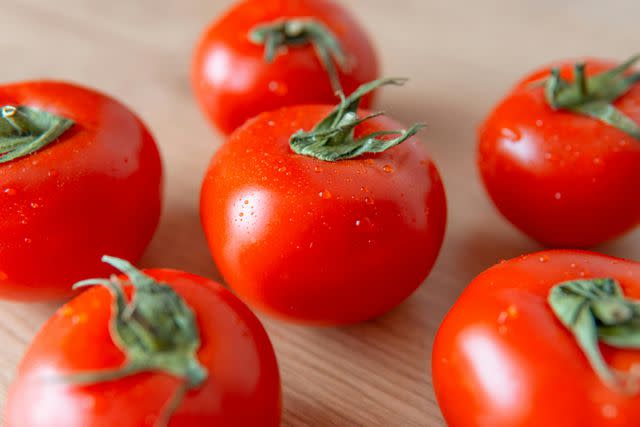
Pexels/Dmitry Demidov
“Tomato skins are rich in the antioxidant lycopene, which helps boost collagen and protect against sun damage, leaving skin more smooth and youthful,” Wan Na Chun, RD, owner of One Pot Wellness based in Indianapolis, told Verywell.
Tomato skin has 2.5 times more lycopene than the pulp. When it comes to micronutrients, the skin also offers plenty, including zinc, manganese, and copper.
Related: 6 Health Benefits of Tomatoes
Citrus
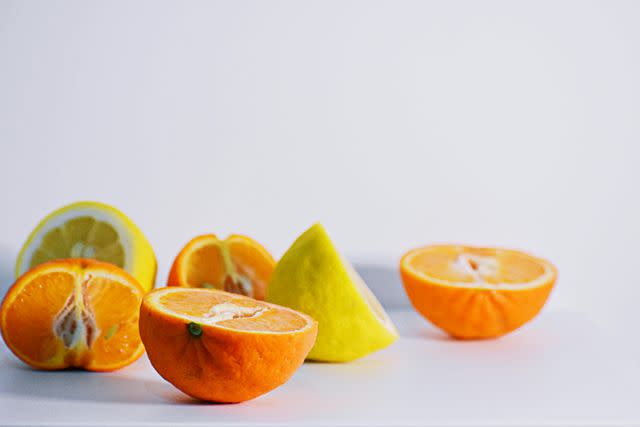
Pexels/Dids
“Though typically not eaten in large amounts, I love incorporating the zest from citrus peels (oranges, limes, lemons) in non-alcoholic beverages and dishes,” Kat Garcia-Benson, RDN, told Verywell. “The zest not only enhances the flavor profile but also can unify the entire meal and add a little more nutrients.”
Eating citrus peels is considered a nutritious choice because they contain high concentrations of fiber, vitamins, and antioxidants. The peel packs more fiber than the fruit inside, which helps with digestion and promotes gut health.
Additionally, citrus peels are rich in vitamin C and various bioflavonoids, which have anti-inflammatory and immune-boosting properties. Citrus peels also possess antioxidants that help fight free radicals, reduce the risk of chronic diseases, and boost skin health.
“A significant benefit of citrus zest is polyphenols, like limonene that is found in lemons,” Mandy Enright, RDN, told Verywell. “These polyphenols act as potent antioxidants and can help promote immunity along with protecting against cancer, supporting heart health, and reducing the risk of type 2 diabetes.”
A 2020 study suggests specific compounds in citrus fruits—polymethoxylated flavone and flavanone—may have protective effects against dementia.
Potato
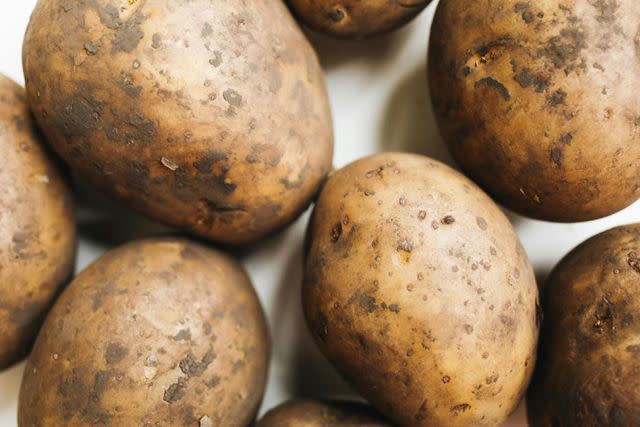
Pexels/Polina Tankilevitch
“Potato skins are another nutritional powerhouse, containing higher levels of vitamin C, potassium, folate, magnesium, and phosphorus compared to the peeled potato,” Chrissy Arsenault, RDN, a registered dietitian at Trainer Academy, told Verywell. “They also provide additional fiber, contributing to gut health and satiety.”
Potato peels also contain many biofunctional compounds. A 2019 study showed that potato peel extract stimulated the synthesis of type I collagen, an effect that may have anti-aging benefits. Potato peel also has been shown to have antimicrobial and antioxidant activities.
“One notable flavonoid [in potato skin] is quercetin, which helps boost the immune system and has antiviral properties that may inhibit histamine release, which helps suppress allergic reactions,” said Enright. “Another important nutrient found in potato skins is choline, which helps to support our brain function (including mood and memory).”
Can I Eat Green Potato Skin?
Look at the color of a potato's skin carefully. Green potatoes contain solanine, a natural toxin that can cause nausea, headaches, and in severe cases, neurological problems.
Related: Potatoes Can Be Part Of A Diabetes-Friendly Meal, Study Finds
Carrot
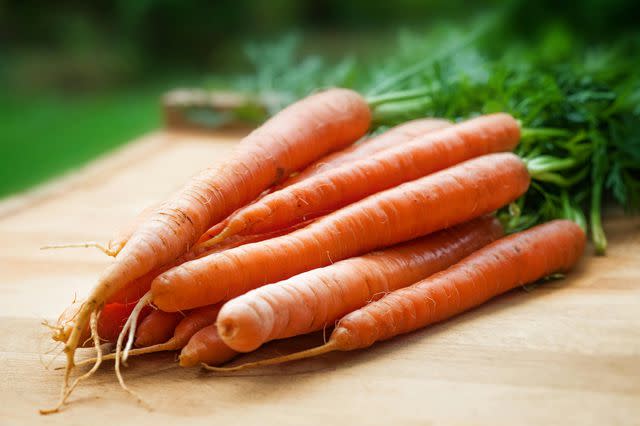
Pexels/mali maeder
Arsenault said that carrot skins are a nutritional powerhouse that you shouldn’t overlook.
“These skins are rich in fiber, antioxidants like beta-carotene and polyacetylenes, and other beneficial phytonutrients. Beta-carotene, which the body converts to vitamin A, is crucial for maintaining healthy vision, skin, and immunity,” she said. Antioxidants in carrot skins may help protect your cells from damage, potentially reducing the risk of chronic disease and even cancer.
The only caveat? “Just be sure to wash thoroughly with a veggie wash before consuming!” said Arsenault.
Related: CDC: Only 1 in 10 Americans Eat Enough Produce
Apple
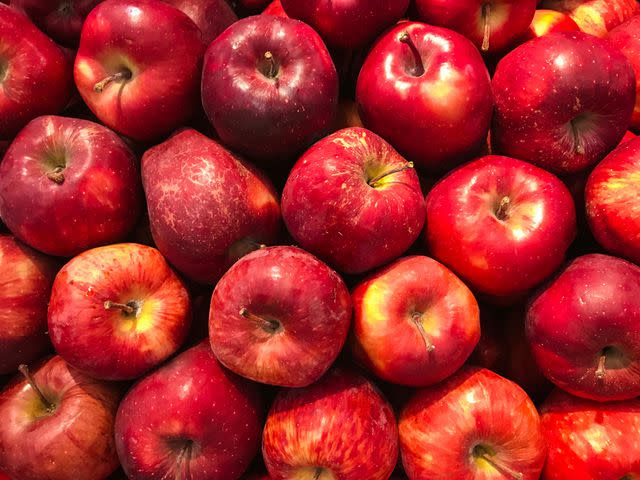
Pexels/Matheus Cenali
Among various fruit peels that are consumable, the apple peel stands out as one of the most beneficial to include in your diet. It’s a great source of vitamins and minerals, most notably vitamin C and potassium, which are essential for overall health.
Apple peels are also packed with a high concentration of fiber, contributing to better digestion and weight management. They also contain important antioxidants and plant compounds (like quercetin, catechin, and chlorogenic acid) that may help prevent chronic diseases and promote heart health.
Grapes
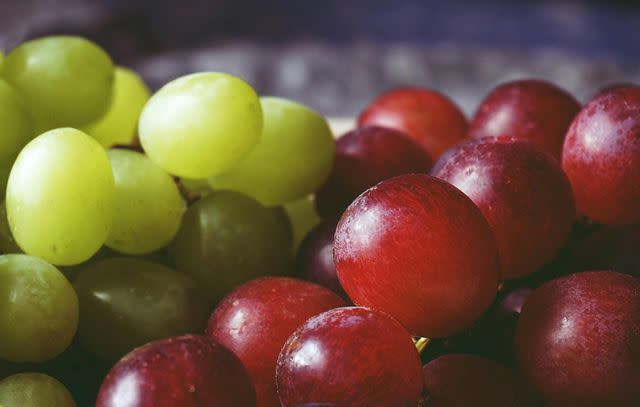
Pexels/Suzy Hazelwood
The skin of grapes is a rich source of antioxidants, including resveratrol, anthocyanins, and flavonoids. These compounds are known for their ability to fight oxidative stress and reduce inflammation in the body.
Resveratrol, in particular, has been linked to a variety of health benefits, including supporting heart health and offering protection against certain types of cancer. Additionally, the fiber found in grape skins promotes a healthy gut microbiome.
Related: Grapes and Weight Loss
Watermelon
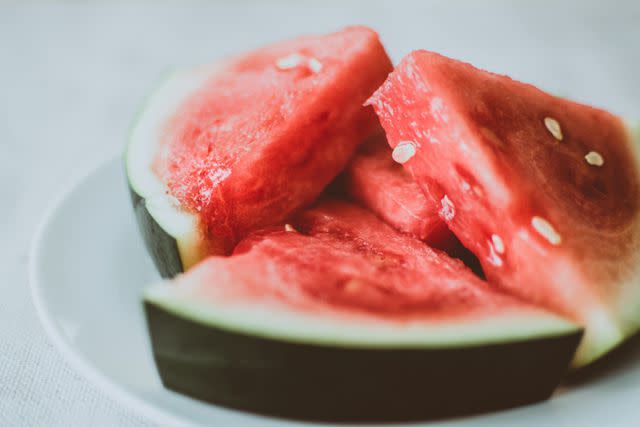
Pexels/Lisa Fotios
Watermelons may not have skin, but they do have a nutrient-packed rind that is both edible and versatile. It’s slightly less sweet than the flesh and has a satisfying crunch.
The rind contains citrulline, an amino acid that may help improve blood circulation and lower blood pressure. It’s also packed with fiber, which promotes a functioning digestive system. Watermelon rind is also packed with vitamins C and B6, which are important for a strong immune system and may support brain function.
To incorporate watermelon rind into your diet, consider pickling it or adding it to a stir-fry. The rind can also be blended into smoothies for an extra nutrient boost. For a simpler option, you can dice the rind and add it to salads. This step boosts the nutrients in your dishes and helps minimize food waste.
Before eating, wash the watermelon thoroughly to remove any pesticides or impurities from the skin.
What This Means For You
The skins, peels, and rinds of many fresh fruits and vegetables are not only safe to eat but also offer many nutritional benefits. Instead of tossing out the outer layers of your produce, consider adding them to your diet.
Read the original article on Verywell Health.
